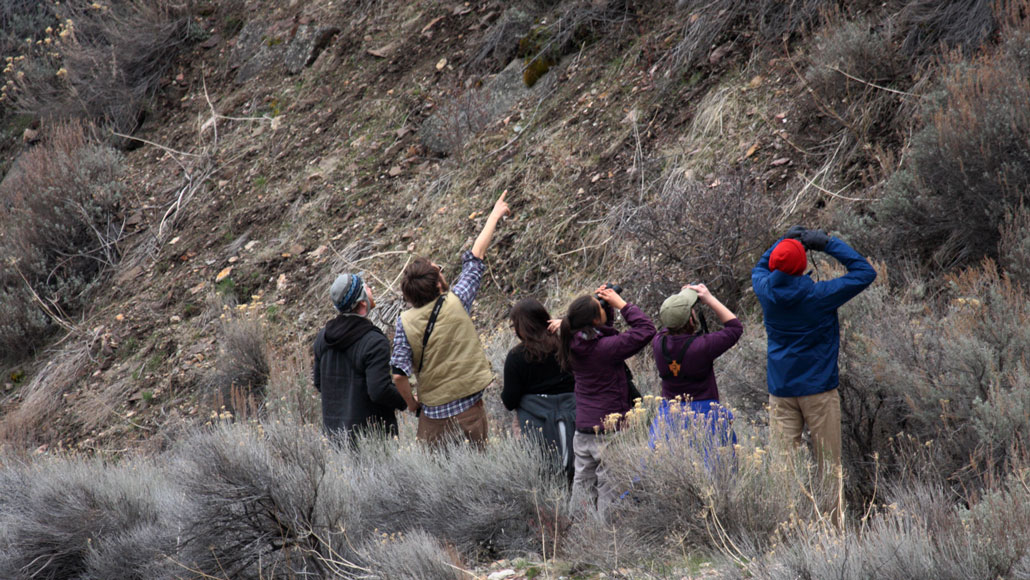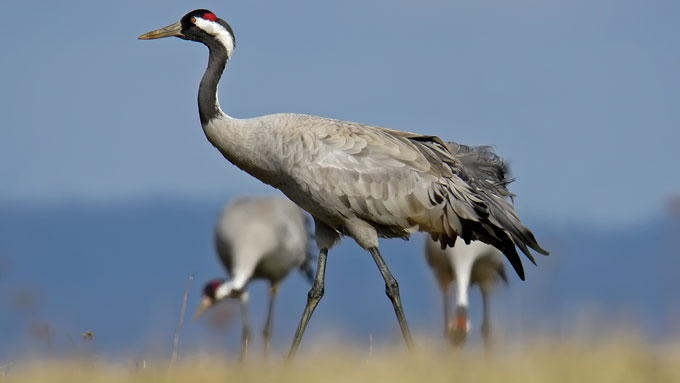
Ecologist Jesse Laney (second from left) leads Oregon State University students on a birdwatching trip. Laney and colleagues’ recent research suggests that a popular birdwatching phenomenon — the Patagonia Picnic Table Effect — is a myth.
Noelle Moen






